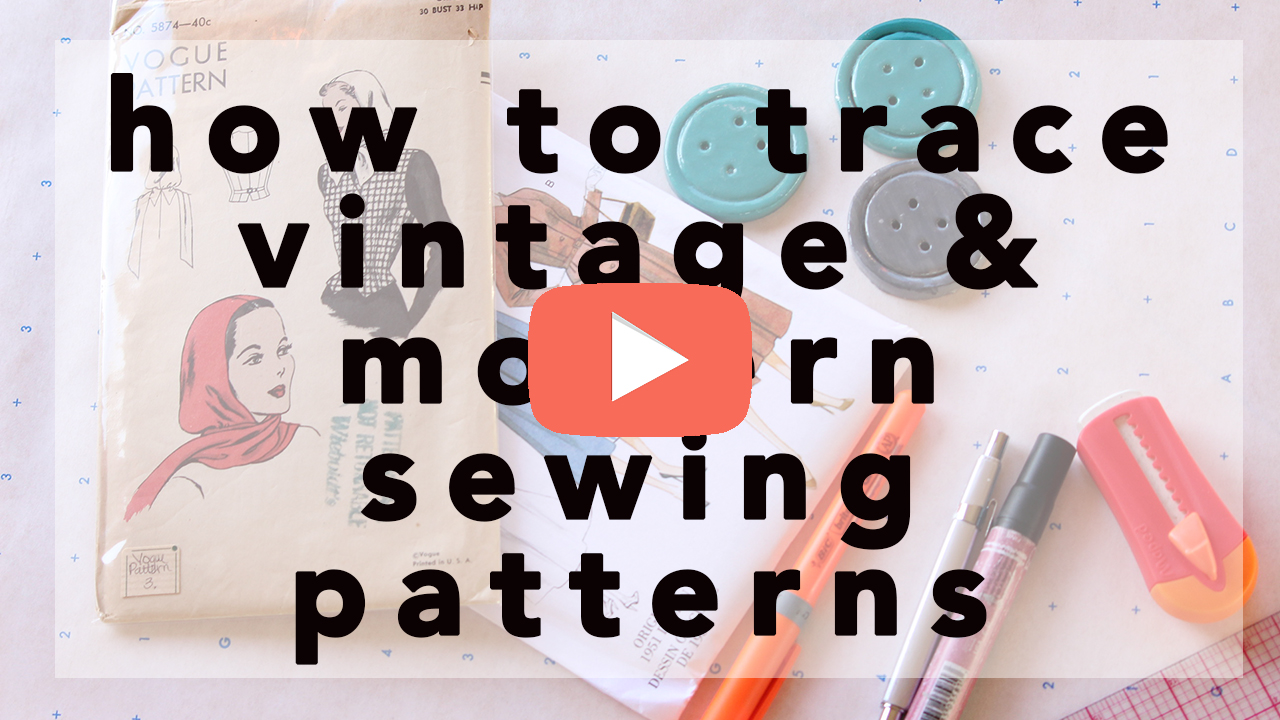If you’re looking for how to trace vintage sewing patterns, my video has you covered!
Yes yes, the video is a little bit on the longer side, but I go into it. The pros and cons, what tools I use, and why I even bother to trace all my modern ones, too. Its definitely a labor of love, but as I say in the video, keeping the original intact is a Big Deal for me, especially when patterns can easily go out of print or I just don’t want to spend time re-taping a PDF.
Vintage patterns, on the other hand, should always be traced to keep the original in as pristine condition as possible. Browsing the sewing community, I know there are some outliers who go balls-to-the-wall and just use their originals and to them I say… you’re breaking my heart!
Time Stamps for a specific pattern-type:
- 6:38 for PDF patterns
- 9:37 for commercial patterns
- 14:24 for vintage patterns
Patterns used in this tutorial were:
- Vintage Vogue 5874 [out of print]
- The Rigel Bomber Jacket
- Butterick B5824
Tools I used in this tutorial:
- Clear, grid ruler (you can use a regular ruler, but I find the clear, flexible ones the most versatile)
- French curve
- Mechanical pencil (my personal preference is a .5 because I like a fine line)
- Eraser
- Pattern weights (the ones I use are from Rachel from Rach Against the Sewing Machine)
- Dot paper
Definitely let me know if this video was helpful for you! I’m considering doing more tutorials in 2017 and making them a regular segment of my YouTube channel. Last year, I received so many questions on how to trace vintage sewing patterns that I couldn’t resist making it my “first” sewing related video of the year (not counting my resolutions post!)
Do you trace your sewing patterns? Why or why not?
Disclaimer: This post contains affiliate links :)

